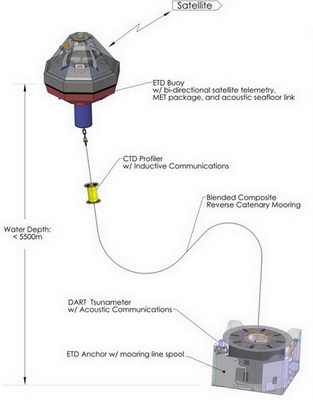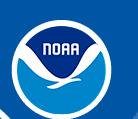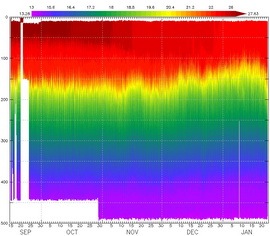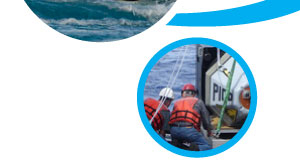Technology
PICO is the evolution of over 30 years of experience at PMEL with deep ocean moorings. Its primary components include:
-
Anchor and Mooring Line: The patented* compound synthetic mooring line has several unique elements that are seamlessly manufactured in one continuous piece. It's then spooled onto a steel reel under tension and placed in a steel box that serves as a bobbin holder, a pallet, and anchor for the buoy. During deployment, the line is drawn off the outside of the reel, through a path of sheaves, and out the center of the anchor. As the anchor falls to the ocean floor, the line is spooled out automatically and without kinks and hockles. Typical mooring scope is between 1.10 to 1.45 depending on the mission, water depth and oceanic conditions.
-
Buoy: The octagonal buoy hull is a simple fabrication with a galvanized steel framework, structural foam core and tough polyurea skin. It has solid sea keeping characteristics due to a strong righting moment and sharp chines, and a stealthy, vandal resistant cowling. Electronics are housed in a large central fiberglass well.
-
Prawler: The Prawler (Profiler + Crawler) is a wave-powered subsea instrument that eliminates the need for multiple sensors on the mooring line. Prawler is housed inside the buoy during shipping and is automatically released after the system is dropped into the water. During descent, it makes a CTD profile and communicates those via inductive modem to the surface buoy. Once reaching the pre-determined bottom depth (~500m) a micro-processor activates a ratcheting mechanism and harnesses the wave motion to crawl up the mooring line.
| PICO Buoy and Anchor Assembly |
|---|
 |
| PICO - FLEXIBLE LOW-COST OCEAN OBSERVATONS |
|---|
Water column profiling with wave-powered instrumented mooring line prawler |






